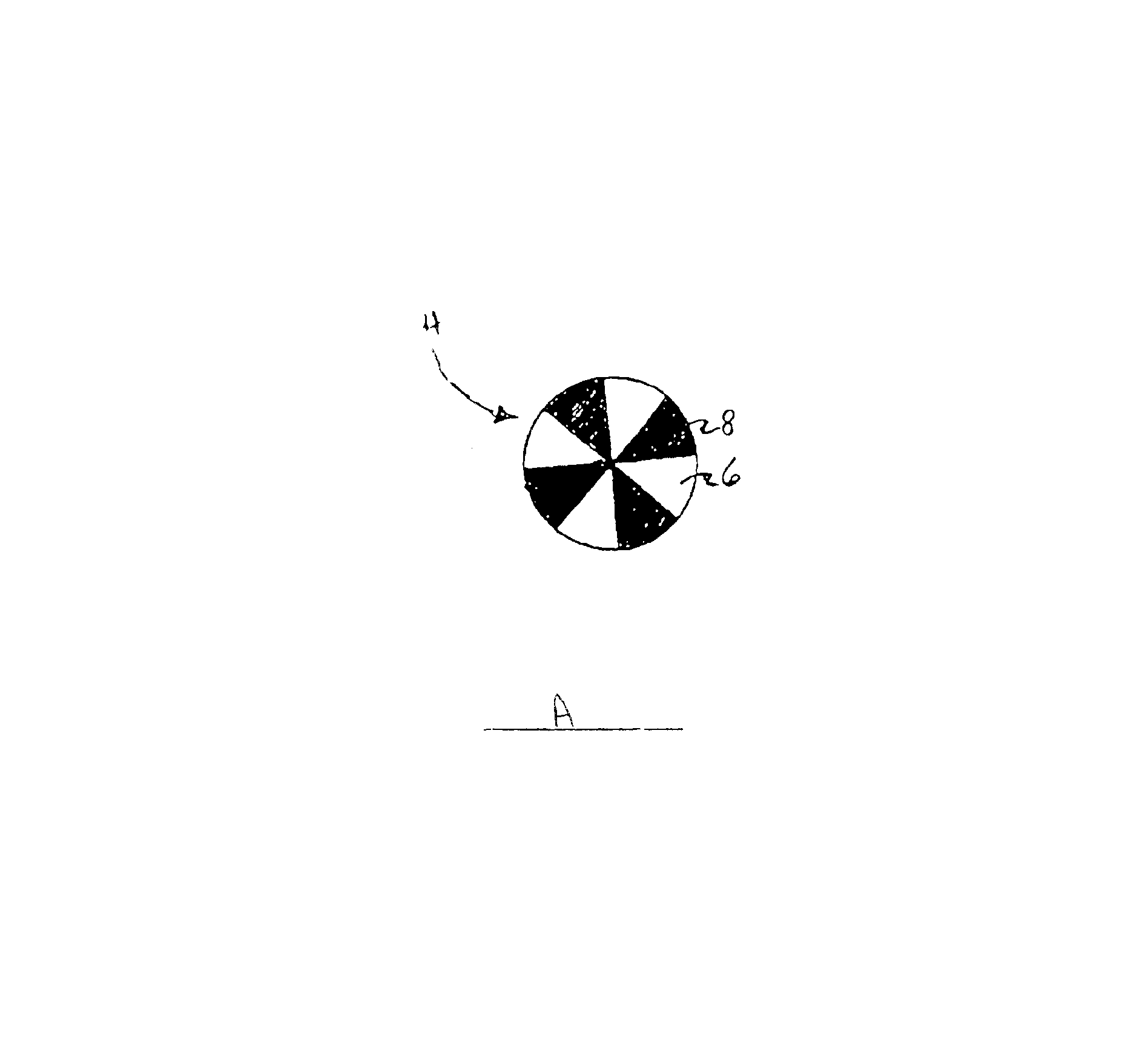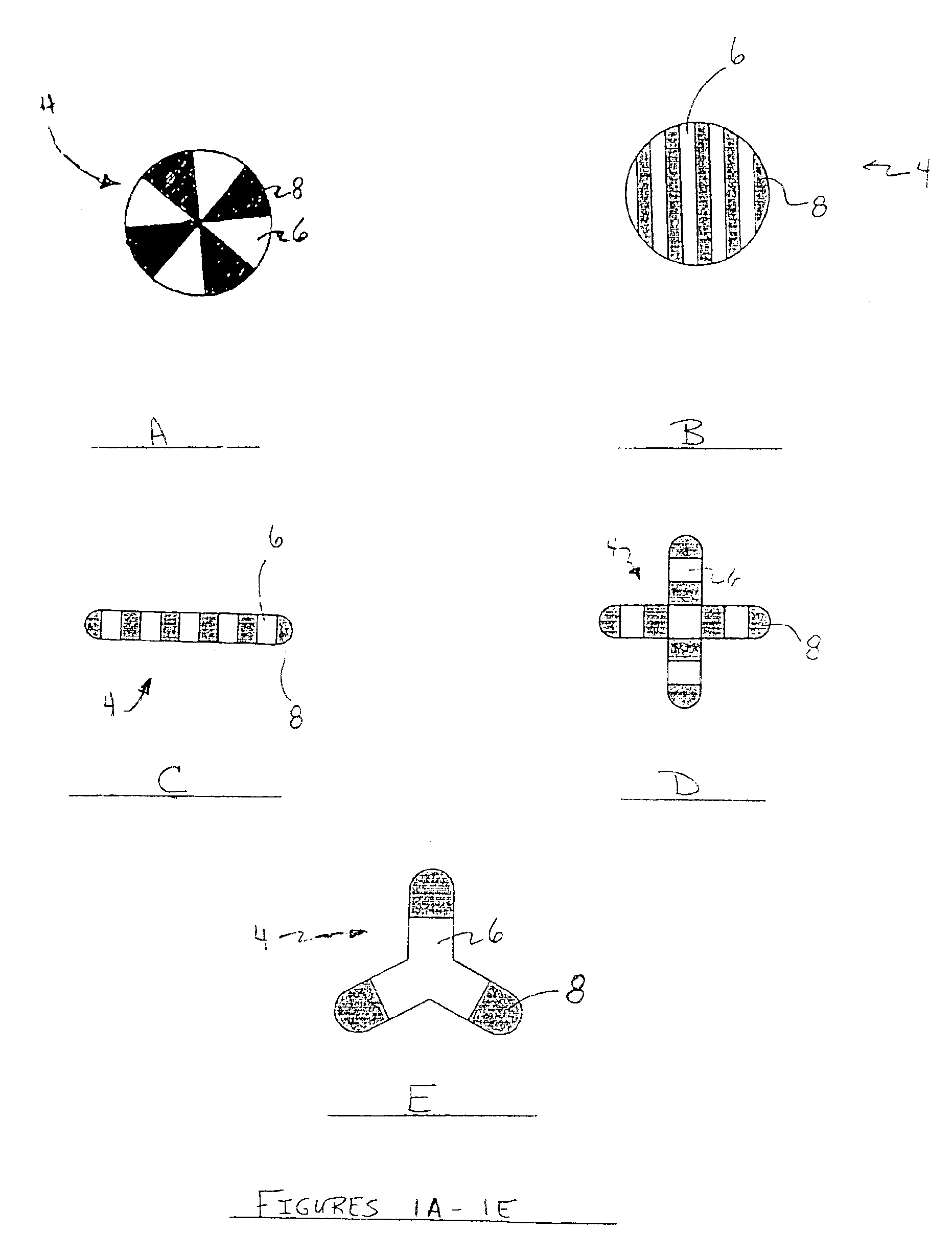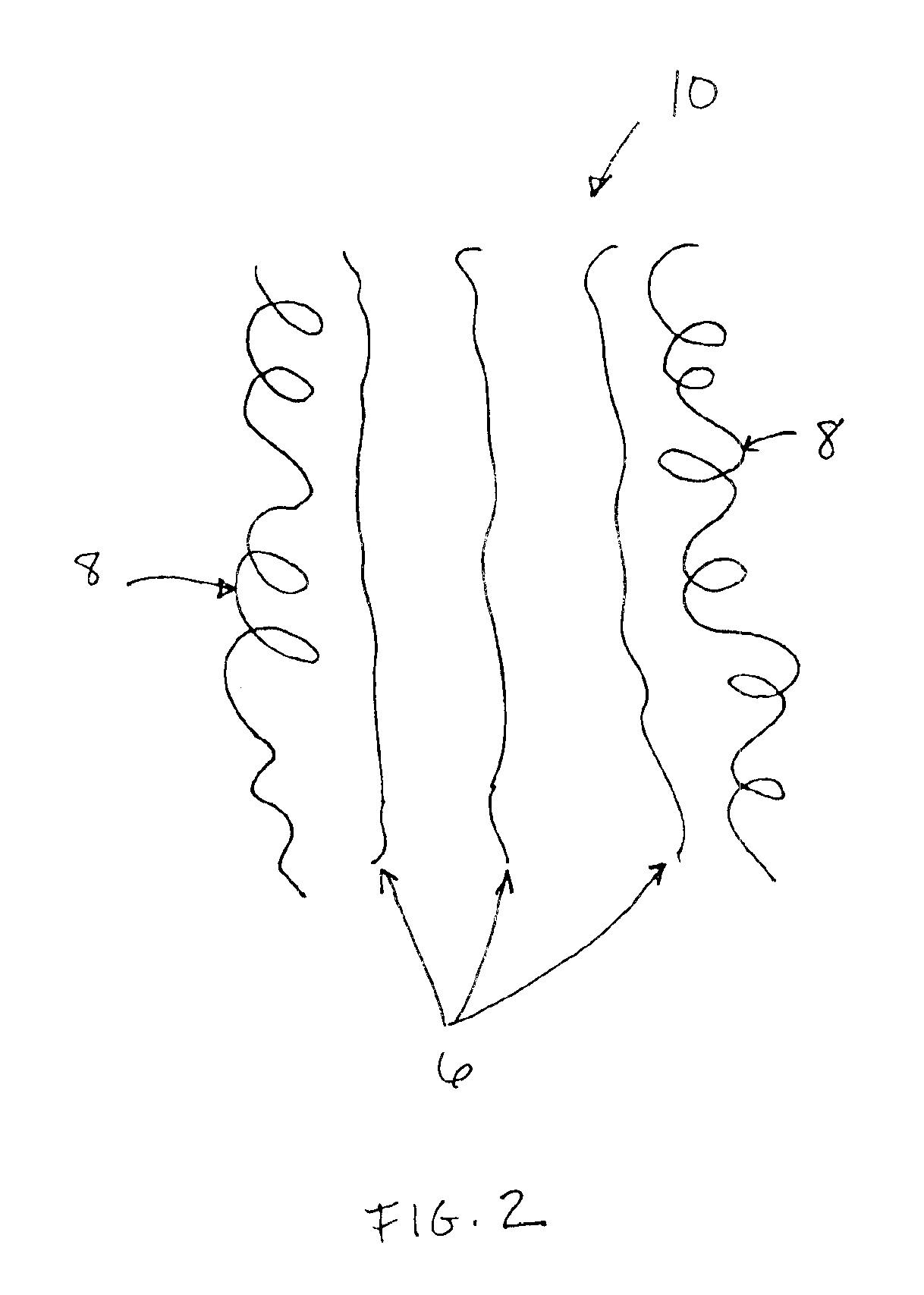Splittable multicomponent elastomeric fibers
a multi-component, elastomeric technology, applied in the field of fine denier fibers, can solve the problems of difficult to produce fine denier fibers, meltblown webs typically do not have good physical strength, and difficult use of dissolvable matrixes to produce fine denier filaments, etc., to achieve high covering power
- Summary
- Abstract
- Description
- Claims
- Application Information
AI Technical Summary
Benefits of technology
Problems solved by technology
Method used
Image
Examples
example 1
Continuous multifilament melt spun fiber is produced using a bicomponent extrusion system. A sixteen segment hollow pie / wedge bicomponent fiber is produced having eight segments of polyurethane polymer and eight segments of polypropylene polymer. The weight ratio of polyurethane polymer to polypropylene polymer in the bicomponent fibers is 50:50. The polyurethane is commercially available as Morthane PS440-200, a thermoplastic polyurethane from Morton International, and the polypropylene is commercially available as MRD5-1442 from Union Carbide.
Following extrusion, the filaments are subsequently drawn 3 times, thereby yielding a 3 denier multifilament multicomponent fiber. The filaments are thermally treated by directing the filaments through a chamber into which air heated to a temperature of about 75° C. flows so that the polyurethane and polypropylene segments release and microfilaments of the respective polymers form.
PUM
| Property | Measurement | Unit |
|---|---|---|
| Linear density | aaaaa | aaaaa |
| Pressure | aaaaa | aaaaa |
| Pressure | aaaaa | aaaaa |
Abstract
Description
Claims
Application Information
 Login to View More
Login to View More - R&D
- Intellectual Property
- Life Sciences
- Materials
- Tech Scout
- Unparalleled Data Quality
- Higher Quality Content
- 60% Fewer Hallucinations
Browse by: Latest US Patents, China's latest patents, Technical Efficacy Thesaurus, Application Domain, Technology Topic, Popular Technical Reports.
© 2025 PatSnap. All rights reserved.Legal|Privacy policy|Modern Slavery Act Transparency Statement|Sitemap|About US| Contact US: help@patsnap.com



